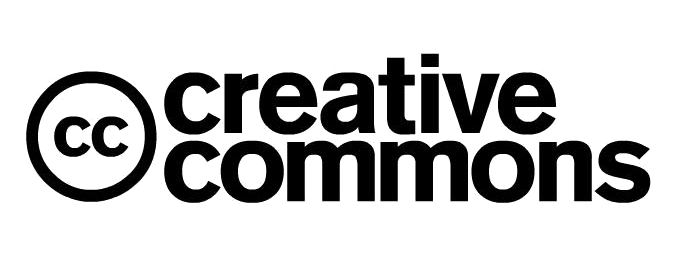The effect of colchicine on the structure of the fibroblast cytoskeleton: A quantitative study of an adaptive cell response by means of atomic force and confocal laser scanning microscopy methods
DOI:
https://doi.org/10.33910/2687-1270-2020-1-2-115-122Keywords:
fibroblasts, colchicine, atomic force microscopy, confocal laser scanning microscopy, stress fibersAbstract
The effect of colchicine was studied quantitatively in a primary culture of newborn rat cardiac fibroblasts by means of atomic force and confocal laser scanning microscopy. It is an established fact that colchicine has a destructive effect on cellular microtubules. On the other hand, this agent is used as a drug substance in the treatment of a number of pathologies, while the molecular mechanisms of its effect remain poorly understood. Atomic force microscopy data showed that colchicine introduced at the concentration of 1 μg/ml caused an increase in fibroblast stiffness, with a more pronounced reaction in fibroblasts with stress fibres: their average Young’s modulus was 60% higher than in control cells. The use of confocal laser scanning microscopy showed that colchicine causes an increase in F-actin fluorescence intensity of fibroblasts by an average of 40% in comparison with the control level. The results suggest that colchicine (1 μg/ml), which inhibits the polymerisation of tubulin microtubules, launches a compensatory cell response that increases the rigidity of fibroblasts by triggering actin polymerisation. The approach used in this work can be used in quantitative analysis of the molecular mechanisms of drug substance effects during preclinical studies.
References
Chang, L., Kious, T., Yorgancioglu, M. et al. (1993) Cytoskeleton of living, unstained cells imaged by scanning force microscopy. Biophysical Journal, vol. 64, no. 4, pp. 1282–1286. DOI: 10.1016/S0006-3495(93)81493-0 (In English)
Chentsov, Yu. S. (2010) Tsitologiya s elementami tsellyulyarnoj patologii [Cytology with elements of cellular pathology]. Moscow: Meditsinskoe informatsionnoe agentstvo Publ., 361 p. (In Russian)
Henderson, E., Haydon, P. G., Sakaguchi, D. S. (1992) Actin filament dynamics in living glial cells imaged by atomic force microscopy. Science, vol. 257 (5078), pp. 1944–1946. PMID: 1411511. DOI: 10.1126/science.1411511 (In English)
Inoue, S. (1981) Cell division and the mitotic spindle. The Journal of Cell Biology, vol. 91, no. 3, pp. 131–147. (In English)
Jung, H. I., Shin, I., Park Y. M. et al. (1997) Colchicine activates actin polymerization by microtubule depolymerization. Molecules and Cells, vol. 7, no. 3, pp. 431–437. PMID: 9264034. (In English)
Jung, S.-H., Park, J.-Y., Joo, J.-H. et al. (2011) Extracellular ultrathin fibers sensitive to intracellular reactive oxygen species: Formation of intercellular membrane bridges. Experimental Cell Research, vol. 317, no. 12, pp. 1763–1773. DOI: 10.1016/j.yexcr.2011.02.010 (In English)
Kuznetsova, T. G., Starodubtseva, M. N., Yegorenkov, N. I. et al. (2007) Atomic force microscopy probing of cell elasticity. Micron, vol. 38, no. 8, pp. 824–833. PMID: 17709250. DOI: 10.1016/j.micron.2007.06.011 (In English)
Liu, L., Zhang, W., Li, L. et al. (2018) Biomechanical measurement and analysis of colchicine-induced effects on cells by nanoindentation using an atomic force microscope. Journal of Biomechanics, vol. 67, pp. 84–90. PMID: 29249455. DOI: 10.1016/j.jbiomech.2017.11.018 (In English)
Mareel, M. M., De Mets, M. (1984) Effect of microtubule inhibitors on invasion and on related activities of tumor cells. International Review of Cytology, vol. 90, pp. 125–168. PMID: 6389412. DOI: 10.1016/S0074-7696(08)61489-8 (In English)
Rieder, C. L., Palazzo, R. E. (1992) Colcemid and the mitotic cycle. Journal of Cell Science, vol. 102, no. 3, pp. 387–392. PMID: 1506421. (In English)
Rotsch, C., Radmacher, M. (2000) Drug-induced changes of cytoskeletal structure and mechanics in fibroblasts: An atomic force microscopy study. Biophysical Journal, vol. 78, no. 1, pp. 520–535. PMID: 10620315. DOI: 10.1016/S0006-3495(00)76614-8 (In English)
Salmon, E. D., McKeel, M., Hays, T. (1984) Rapid rate of tubulin dissociation from microtubules in the mitotic spindle in vivo measured by blocking polymerization with colchicine. The Journal of Cell Biology, vol. 99, no. 3, pp. 1066–1075. PMID: 6470037. DOI: 10.1083/jcb.99.3.1066 (In English)
Sneddon, I. N. (1965) The relation between load and penetration in the axi-symmetric boussinesq problem for a punch of arbitrary profile. International Journal of Engineering Science, vol. 3, no. 1, pp. 47–57. DOI: 10.1016/0020-7225(65)90019-4 (In English)
Spedden, E., White, J. D., Naumova, E. N. et al. (2012) Elasticity maps of living neurons measured by combined fluorescence and atomic force microscopy. Biophysical Journal, vol. 103, no. 5, pp. 868–877. PMID: 23009836. DOI: 10.1016/j.bpj.2012.08.005 (In English)
Timoshchuk, K. I., Khalisov, M. M., Penniyaynen, V. A. et al. (2019) Mechanical characteristics of intact fibroblasts studied by atomic force microscopy. Technical Physics Letters, vol. 45, no. (9), pp. 947–950. DOI: 10.1134/S1063785019090293 (In English)
Tsai, M. A., Waugh, R. E., Keng, P. C. (1998) Passive mechanical behavior of human neutrophils: Effects of colchicine and paclitaxel. Biophysical Journal, vol. 74, no. 6, pp. 3282–3291. PMID: 9635782. DOI: 10.1016/S0006-3495(98)78035-X (In English)
Wu, H. W., Kuhn, T., Moy, V. T. (1998) Mechanical properties of L929 cells measured by atomic force microscopy: Effects of anticytoskeletal drugs and membrane crosslinking. Scanning, vol. 20, no. 5, pp. 389–397. PMID: 9737018. DOI: 10.1002/sca.1998.4950200504 (In English)
Downloads
Published
Issue
Section
License
Copyright (c) 2020 Maksim M. Khalisov, Valentina A. Penniyaynen, Svetlana A. Podzorova, Kirill I. Timoshchuk, Alina D. Rosenblit, Boris V. Krylov

This work is licensed under a Creative Commons Attribution-NonCommercial 4.0 International License.
The work is provided under the terms of the Public Offer and of Creative Commons public license Creative Commons Attribution 4.0 International (CC BY 4.0).
This license permits an unlimited number of users to copy and redistribute the material in any medium or format, and to remix, transform, and build upon the material for any purpose, including commercial use.
This license retains copyright for the authors but allows others to freely distribute, use, and adapt the work, on the mandatory condition that appropriate credit is given. Users must provide a correct link to the original publication in our journal, cite the authors' names, and indicate if any changes were made.
Copyright remains with the authors. The CC BY 4.0 license does not transfer rights to third parties but rather grants users prior permission for use, provided the attribution condition is met. Any use of the work will be governed by the terms of this license.







